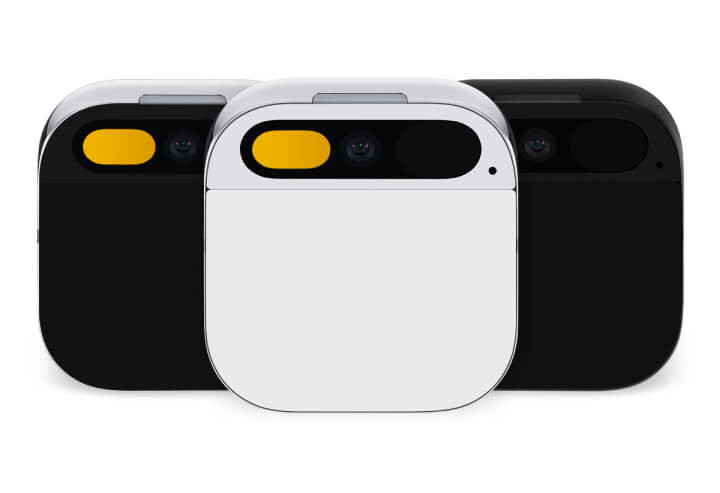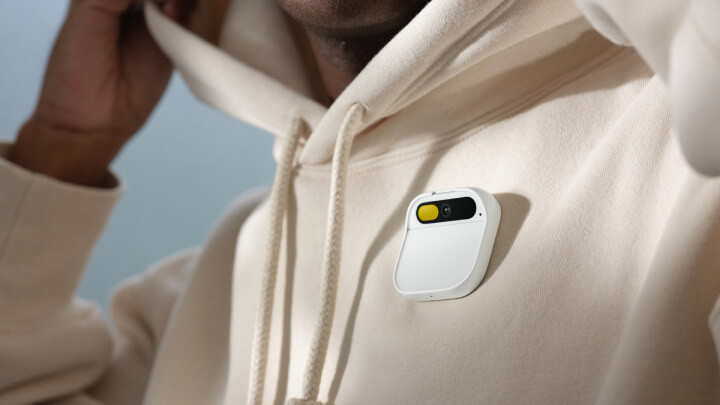Humane's AI Pin Unveiled: Is It a Game Changer or Too Late
05-12-2023 | By Robin Mitchell
In a highly anticipated launch, Humane has finally demonstrated the Ai pin that they believe will change the world and how we interact with smart devices. While there is certainly some impressive technology integrated into the technology, others are somewhat perplexed at the advantages that it can actually bring. What challenges have smartphones presented to society, what features does Humane’s solution offer, and is it really a game changer in the field of smart devices?
What challenges have smartphones presented to modern society?
No one can doubt the brilliance behind smartphones, integrating billions of transistors, utilising advanced manufacturing techniques, and running complex operating systems with countless numbers of routines and advanced features. In fact, the smartphone has become so integral in human society that the vast majority of people on this planet now have a smartphone, with some outright using their phones to replace computers, laptops, and tablets.
The Future of Personal Technology: Ai Pin vs Smartphone
As we delve into the future of personal technology, a key question arises: how does the Ai Pin stack up against the traditional smartphone? This comparison is crucial in understanding the potential paradigm shift in how we interact with our digital environment. The Ai Pin, with its innovative approach to user interaction, challenges the status quo established by smartphones, offering a glimpse into a future where technology is more integrated into our natural movements and less obtrusive in our daily lives.
But for all the benefits that smartphones provide, there are very clear warning signs that they may also be doing some degree of harm. The first issue that smartphones introduce is that they are highly addictive devices and thus dominate everyday life. Going back two decades, users of mobile phones would use them for the sole purpose of communication, and while there certainly were some users who struggled to get off such devices, most mobile users would keep these devices at arm’s reach, rarely seeing the need to compulsively check for updates.
The first issue that smartphones introduce is that they are highly addictive devices and thus dominate everyday life. Going back two decades, users of mobile phones would use them for the sole purpose of communication, and while there certainly were some users who struggled to get off such devices, most mobile users would keep these devices at arm’s reach, rarely seeing the need to compulsively check for updates.
However, the introduction of modern smartphones and their ability to connect to numerous internet-related services has seen them become a serious distraction for all age groups. It is not uncommon to see smartphones on tables during meetings, in active use during conversations with others, and even as the sole piece of interest in social events.
This distraction has also led to a secondary challenge: safety. Even though using mobile phones while driving has been banned in the UK long before smartphones were popular, the temptation introduced by smartphones, thanks to their ability to run so many different applications, means that they are more likely to be interacted with by drivers and pedestrians.
Safety and Security Concerns with Smartphones
Another challenge that smartphones introduce is their ability to be more easily hacked. Mobile phones of the past would often be based on microprocessor systems with severely limited capabilities, meaning that they were rarely used for anything other than sending texts and making calls. However, as modern smartphones utilise complex microprocessors with large operating systems capable of running arbitrary apps, hackers have a far greater incentive to hack such devices, especially when considering that these devices can now be used for storing credit cards, online banking, and making payments via browsers.
Finally, due to the large size of smartphones, it is very easy to damage them. The large size of such devices also makes them difficult to store (not all pockets can easily hold a smartphone) and thus prone to theft and damage.
Humane releases Ai Pin – A potential smartphone replacement
In what was a highly anticipated release, Humane has finally publicly demonstrated its Ai Pin and is now taking pre-orders. Reflecting on their mission, Humane states, "We believe in building innovative technology that feels familiar, natural, and human. Technology that improves the human experience and is born from good intentions." This philosophy is evident in the Ai Pin's design, aiming to put users back in touch with themselves and each other, offering a more intuitive and human-centric approach to technology.

With a price tag of $699 and a monthly fee of $29 for use with the T-Mobile network, there are many who feel the new device could be an excellent device to replace everyday smartphones while helping users move away from the current dependency that many have over them.
The device itself consists of two main parts: the logic device and a secondary battery system, which is magnetically attached to the logic device. The purpose of this two-part design is that it allows for the battery to act as a clip when fitted into a breast pocket as well as allowing for the battery to be replaced in a matter of seconds.
A small internal battery in the logic device can keep the device powered for a small amount of time so that the larger battery can be hot-swapped, and the use of wireless power delivery between the main battery and logic device allows for powering through clothing material. This ability to hot-swap also means that the device never needs to be left in a charging stand to be charged, hence making it a truly 24/7 device.
However, where the Ai Pin has really piqued the interest of many is its use of a camera and laser projector. Instead of using a screen, a user merely needs to hold up their palm, and the device projects the screen directly onto the hand. Furthermore, the use of gesture tracking allows for interaction with the device, including navigation and selection. For example, if the user wishes to return to the home screen, they only need to make a fist and open their hand.
The Ai Pin has also been designed with AI in mind and has access to numerous cloud-based AI services, including ChatGPT. But where the AI Pin really demonstrates its capabilities is in its ability to select the most appropriate service based on the task being conducted instead of trying to use one AI to solve all challenges.
Finally, the Ai Pin can be used for all kinds of real-time applications, including bi-directional translation, whereby users speaking a foreign language can be translated, and responses can be translated back. Such abilities are something akin to universal translators found in many science fiction stories and have massive opportunities across all industries.

Comparative Analysis: Ai Pin vs. Existing Smart Devices
Overview
The Ai Pin, developed by Humane, is a unique wearable device that offers an alternative to traditional smartphones. It is designed to be fastened to clothing and provides functionalities like taking photos, sending texts, and projecting a visual interface onto a user's palm. It also features a virtual assistant powered by AI technologies like ChatGPT. The device is set to go on sale for $699, with additional monthly charges for services through T-Mobile.
Comparison with Smartphones and Wearables
-
Form Factor and Wearability: Unlike smartphones that are typically carried in pockets or bags, the Ai Pin is worn on the body, similar to a brooch or a badge. This design offers constant accessibility and a hands-free experience, which could be advantageous in scenarios where immediate or discreet access to technology is needed.
-
User Interface: The Ai Pin uses a laser to project its interface onto the user's palm, a stark contrast to the touchscreen interfaces of smartphones. This could be beneficial in situations where hands are otherwise occupied, or in environments where using a phone is impractical or rude.
-
Virtual Assistant and AI Integration: With its focus on AI, the Ai Pin might offer a more seamless and integrated virtual assistant experience compared to smartphones. This could be particularly useful for real-time information retrieval, translations, or managing smart home devices without the need to physically interact with a phone.
-
Privacy and Recording Transparency: The Ai Pin is designed to be transparent about when it's recording, addressing privacy concerns that are often associated with smartphones and other smart devices. This feature might appeal to users who are conscious about their digital footprint and privacy.
-
Battery Life and Portability: The Ai Pin comes with a magnetic battery pack and is designed for all-day wear, which could be more convenient than the frequent charging needs of most smartphones.
-
Social Acceptance and Fashion: The Ai Pin's design as a wearable tech that's visibly worn on clothing might face challenges in terms of social acceptance and fashion compatibility, unlike smartphones which are discreetly carried.
-
Functionality and App Ecosystem: Smartphones currently have a vast ecosystem of apps for various purposes, which the Ai Pin might not be able to match initially. The Ai Pin's functionality seems more focused on communication and AI integration, whereas smartphones offer a broader range of applications.
Is Humane’s solution a game changer, or is it too late?
While there is no doubt that the engineering behind the Humane Ai Pin is brilliant, there are some serious questions that need to be asked regarding its commercial viability and practicality. The Ai Pin, representing the latest in smart device innovations, challenges the traditional smartphone paradigm, but does it do enough to be considered a game changer in the rapidly evolving world of personal technology?
The first glaring issue that stems from the design is that all tech users today are used to touchscreens, and touchscreens have proven to be massively beneficial. Replacing high-definition screens with multi-touch capabilities with laser projects onto palms is somewhat of a step back, except for those who do not use smartphones for anything other than as a mobile phone. As such, the Ai Pin will be unable to do any practical modern task, including word editing, video streaming, and video calling.
The second issue faced by the Ai Pin is that while it advertises itself as an AI-powered device, there is nothing stopping smartphone developers from incorporating the same features into their own smartphones. In fact, it is possible that smartphones could be a more viable platform for AI tasks as they have significantly larger processing capabilities (such as AI on the edge).
The third issue faced by the Ai Pin is that it is fundamentally very different to smartphones and, as such, may struggle to see adoption. While the device is likely to appeal to those with a niche interest in electronic devices, as far as practical applications go, a typical smartphone, which can be put into a pocket and pulled out with relative ease, will provide far more functionality.
Overall, it would seem that the Ai Pin is trying to change how users interact with electronic devices, and while it certainly has some brilliant engineering incorporated into it, the chances of it disrupting the smartphone market are extremely unlikely. Even as a wearable device, a watch is arguably more convenient thanks to its ability to take direct medical data from users.

